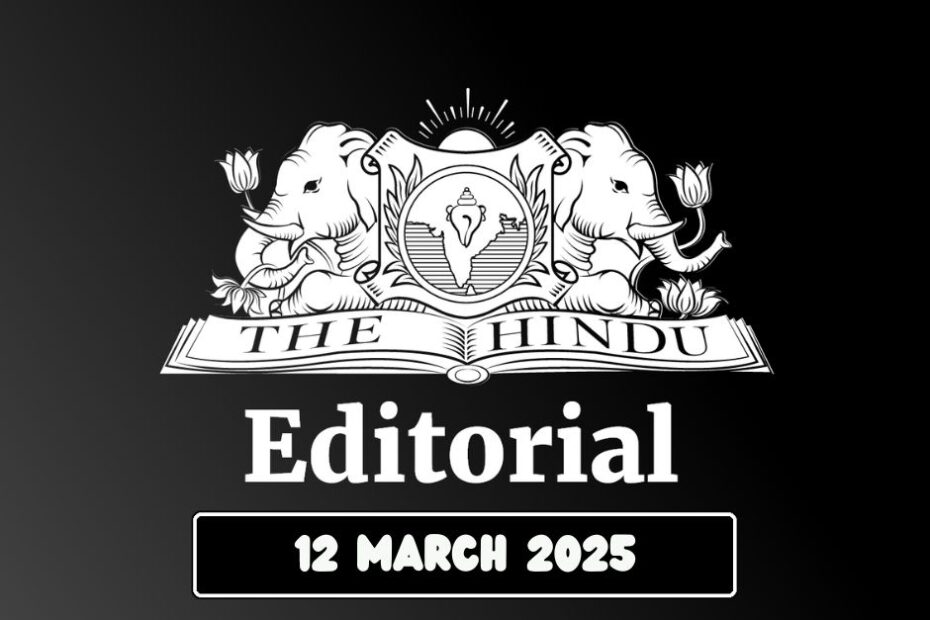| Topic: GS2 – Governance |
| Context |
|

Prevalence of Corruption in Business Operations
- Despite efforts to curb corruption, red-tapism and bribery continue to hinder business growth in India.
- A 2024 survey found that 66% of businesses admitted to paying bribes, with 54% stating they were coerced to obtain permits, expedite government processes, or ensure compliance.
- Sectors like labour, GST, income tax, pollution control, provident funds, property registration, drug regulation, and health departments are the most affected.
Impact on Foreign Investment
- Corruption acts as a major deterrent to Foreign Direct Investment (FDI), with four out of five businesses in a separate survey expressing concerns.
- The urgent need for a transparent and predictable regulatory framework is critical for attracting global investments.
Slow Progress in Compliance Reforms
- The government initiated compliance reforms two years ago, but progress remains slow.
- The Jan Vishwas (Amendment of Provisions) Act, 2023 decriminalised 180 provisions to reduce business burdens.
- In the 2025 Budget, Jan Vishwas 2.0 was announced to further decriminalise around 100 provisions, but over 20,000 provisions with imprisonment clauses remain unchanged.
Complex and Unstable Compliance Regulations
- Businesses struggle with complex compliance requirements, which are often misused by regulatory officials to extract bribes.
- Even after fulfilling all compliance requirements, businesses often need to make unofficial payments to receive approvals.
- Inspectors have excessive discretionary power, allowing them to threaten imprisonment or shutdowns without accountability.
Frequent Changes in Compliance Rules
- Compliance rules are updated frequently, making it difficult for businesses to stay compliant.
- In the last year, there were 9,420 compliance updates, averaging 36 changes per day.
- This rapid change indicates regulatory inefficiency or deliberate attempts to create corruption pathways.
- The Food Safety and Standards Authority of India (FSSAI) has introduced a system where food label regulations will change only once a year, providing a model for other regulatory bodies.
Delays in Labour Law Implementation
- India replaced 29 colonial-era labour laws with four new labour codes, but these remain unimplemented.
- Since labour laws fall under the Concurrent List, state governments must act quickly to implement these long-overdue reforms.
The Need for a Digital-First Compliance System
- Setting up a factory in India requires hundreds of documents across 40+ government departments, increasing inefficiencies and corruption.
- A digital-first approach can simplify compliance through a unified business identifier linked to a tamper-proof digital repository.
- This could reduce approval times from months to days, similar to how digital initiatives have streamlined airport security.
Fragmented Business Identity Systems
- Currently, businesses require at least 23 different identity numbers, such as PAN, GSTIN, CIN, and factory licences.
- Each identifier needs periodic renewals, increasing inefficiencies and corruption.
- A ‘One Nation, One Business’ identity system could simplify regulatory interactions, reducing bureaucratic friction and corruption.
Global Competition for Investments
- Other countries are implementing governance reforms to attract businesses.
- If large economies improve ease of doing business while India struggles with corruption and red tape, investors may choose other destinations over India.
- India must act urgently to stay competitive and attract investments.
Conclusion
- India must eliminate bureaucratic hurdles and create a predictable regulatory environment to sustain economic momentum.
- The High-Level Committee for Regulatory Reforms must act boldly to modernise compliance and reduce corruption.
- Without decisive action, India risks losing global investment and talent, impacting its economic growth.
| Practice Question: Discuss the impact of corruption and regulatory inefficiencies on ease of doing business in India. Suggest measures to streamline compliance and reduce bureaucratic hurdles. (150 Words /10 marks) |
If you like Editorial don’t forget to check this – India and U.S. Trade Deal A Game-Changer or a WTO Nightmare
